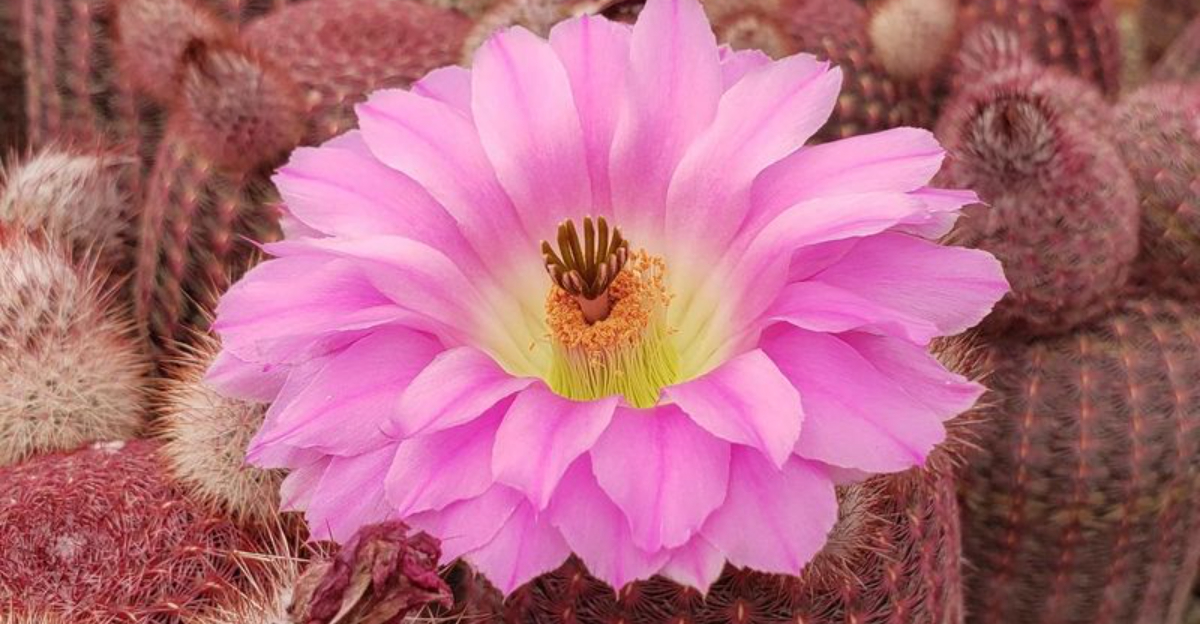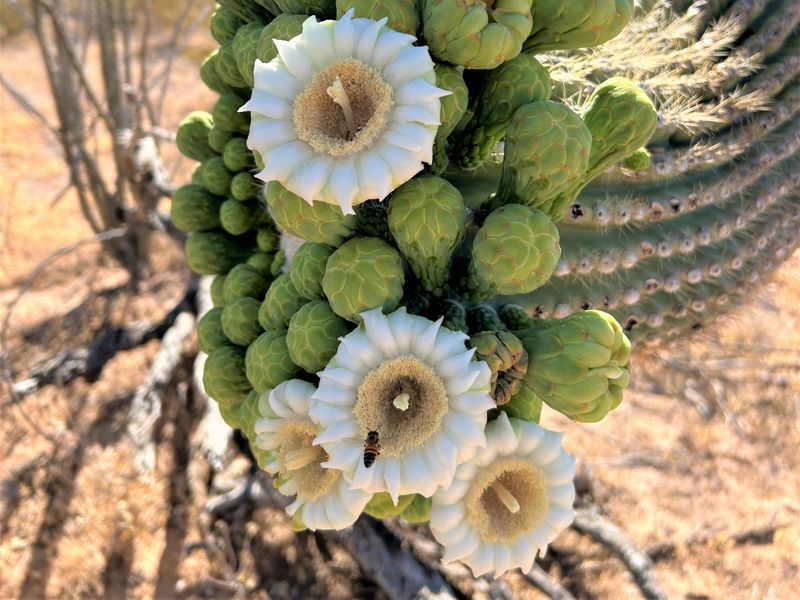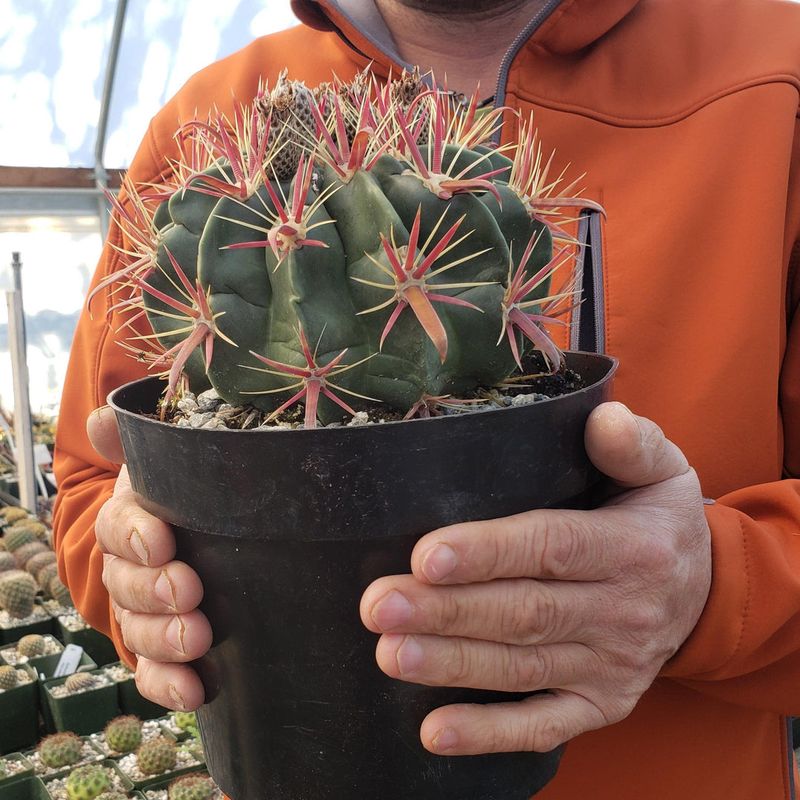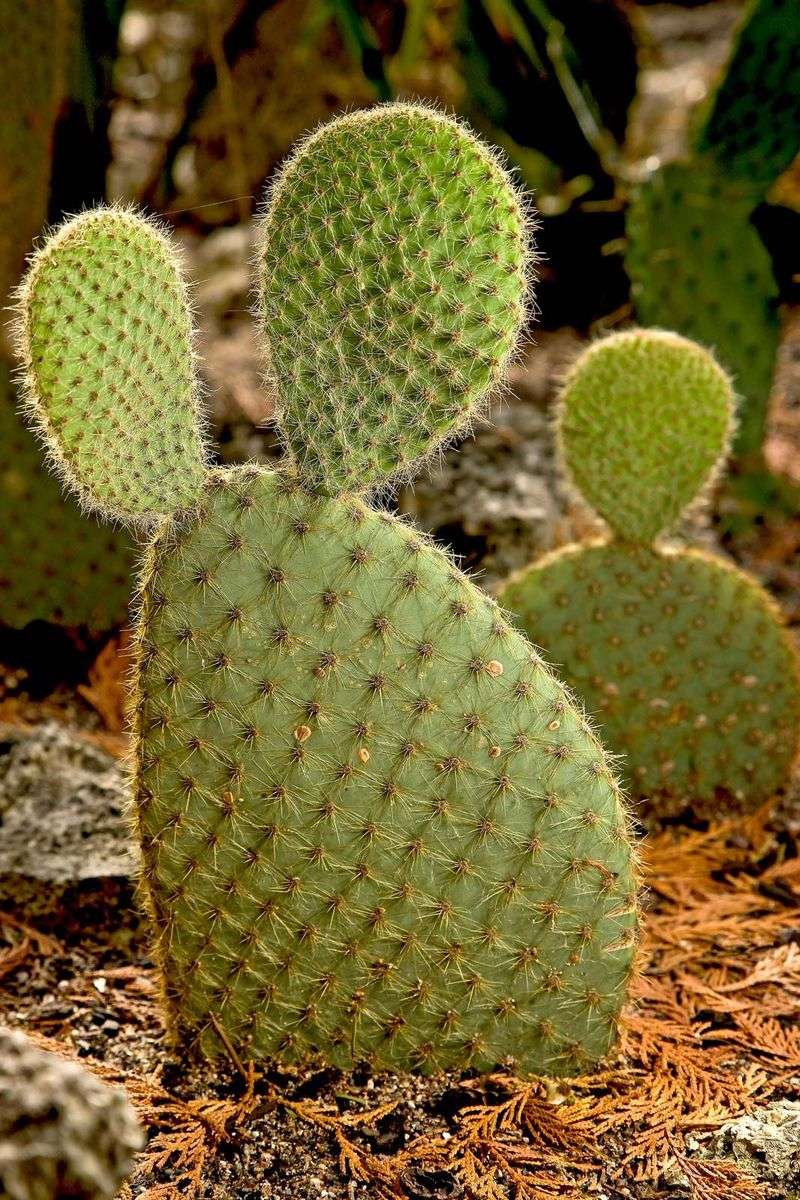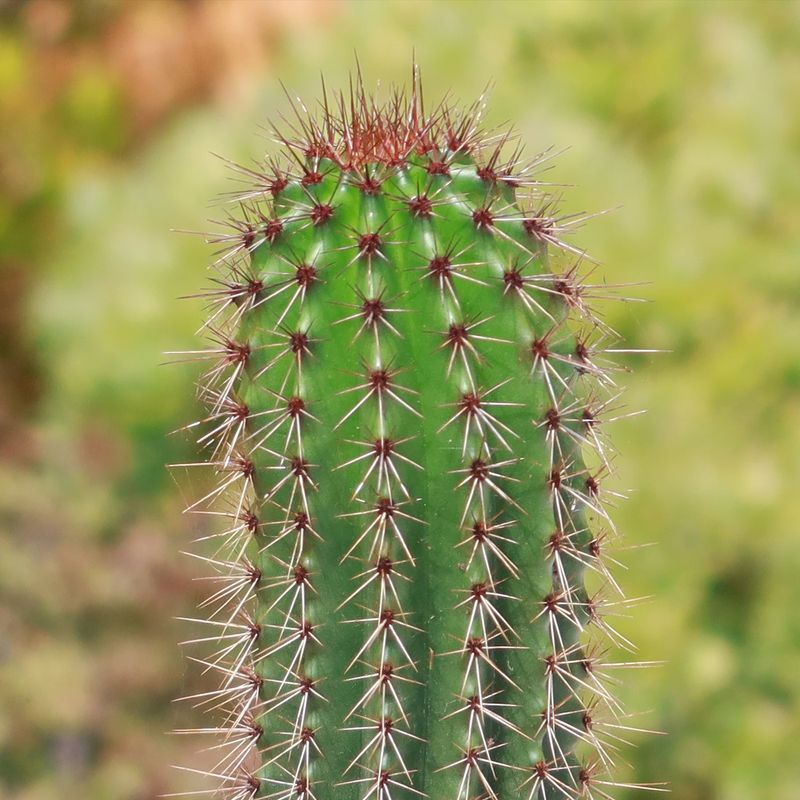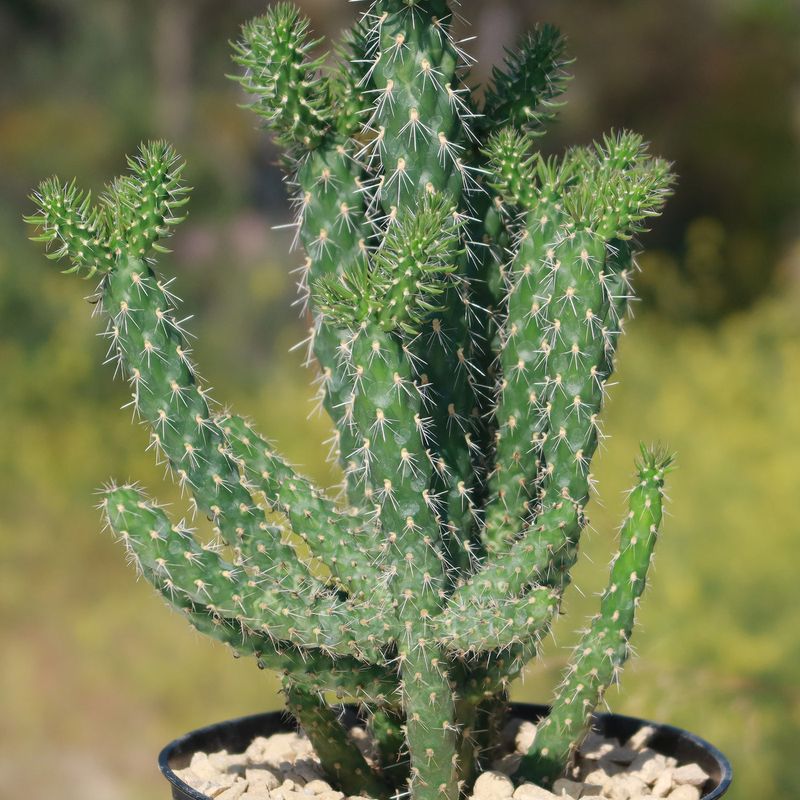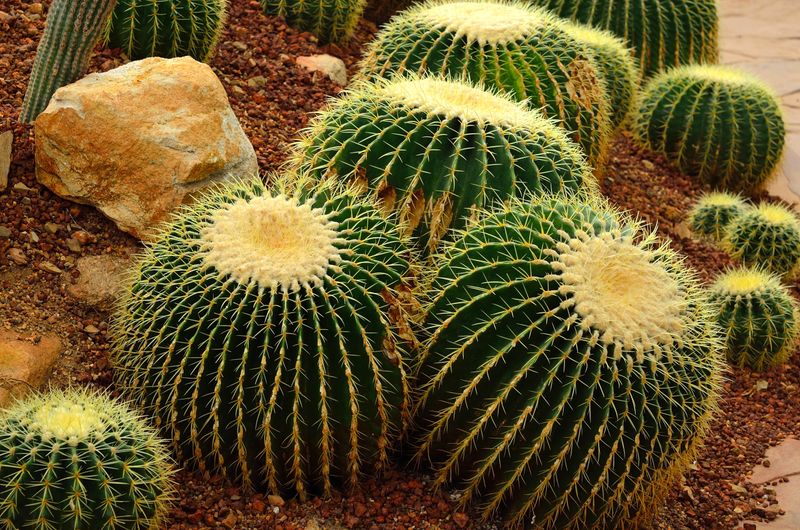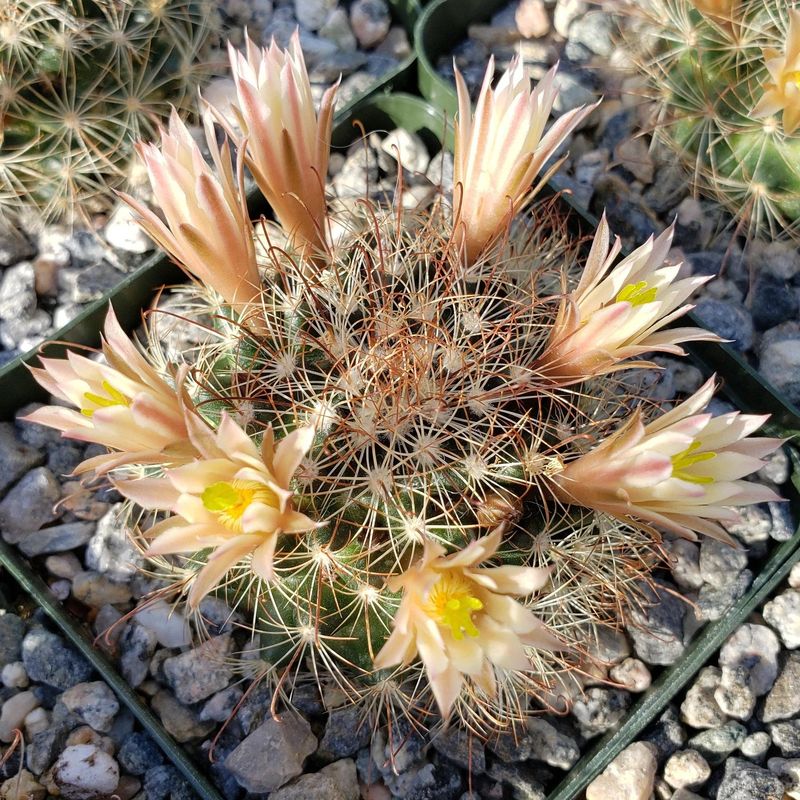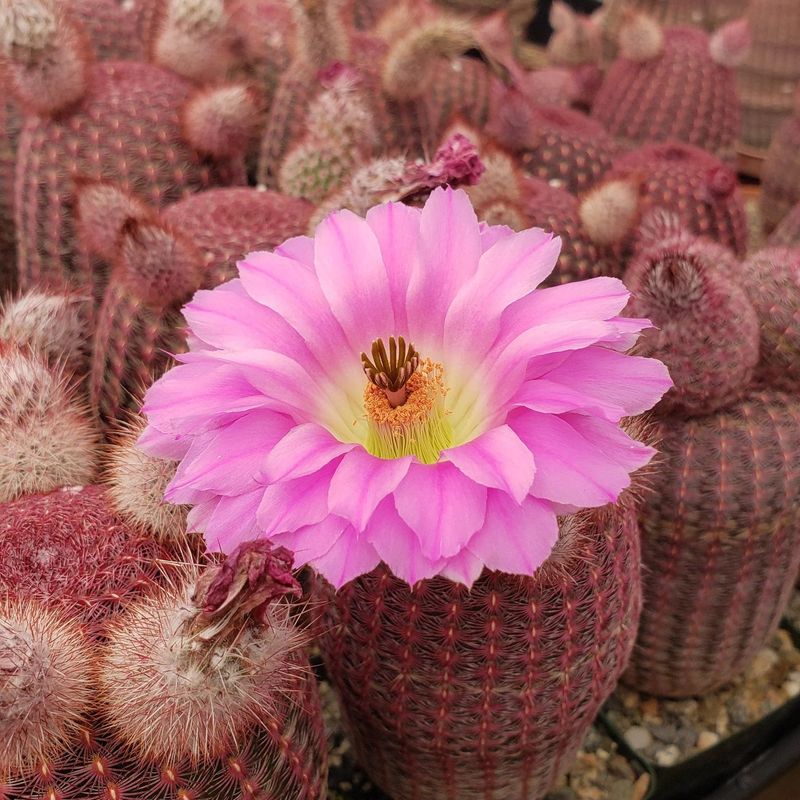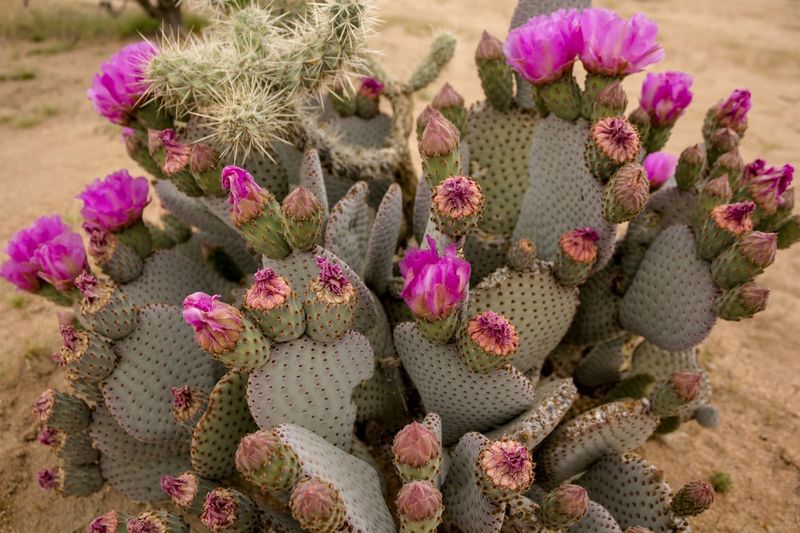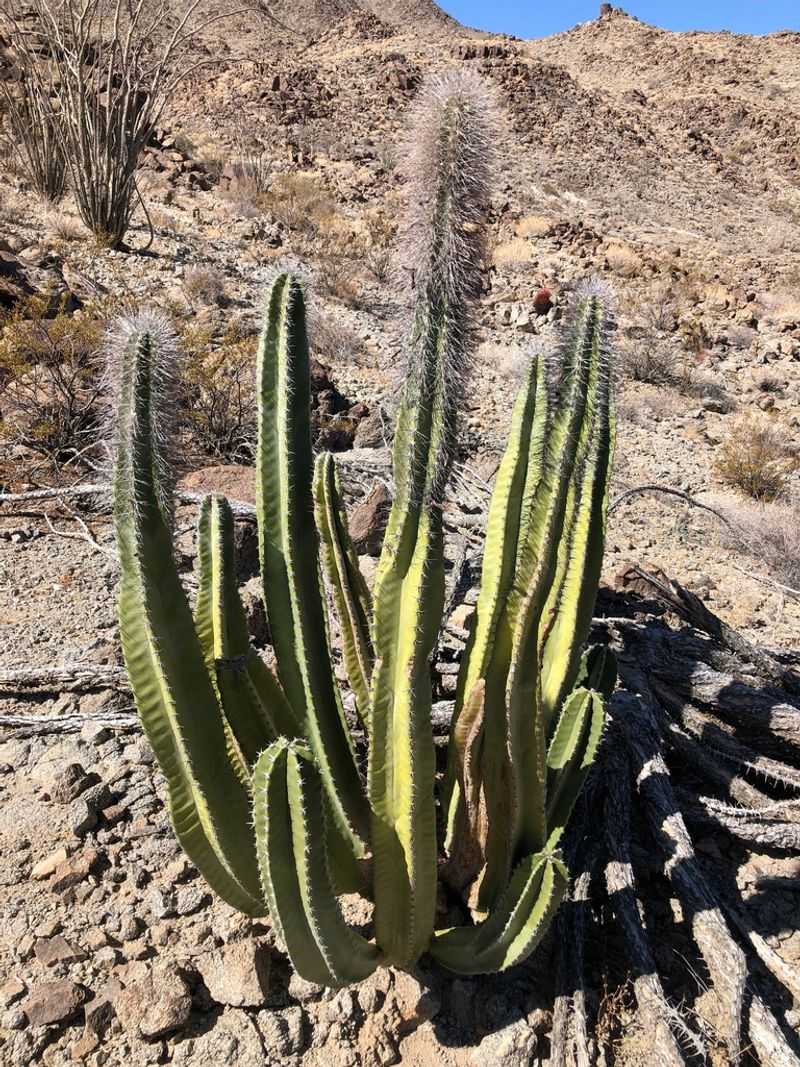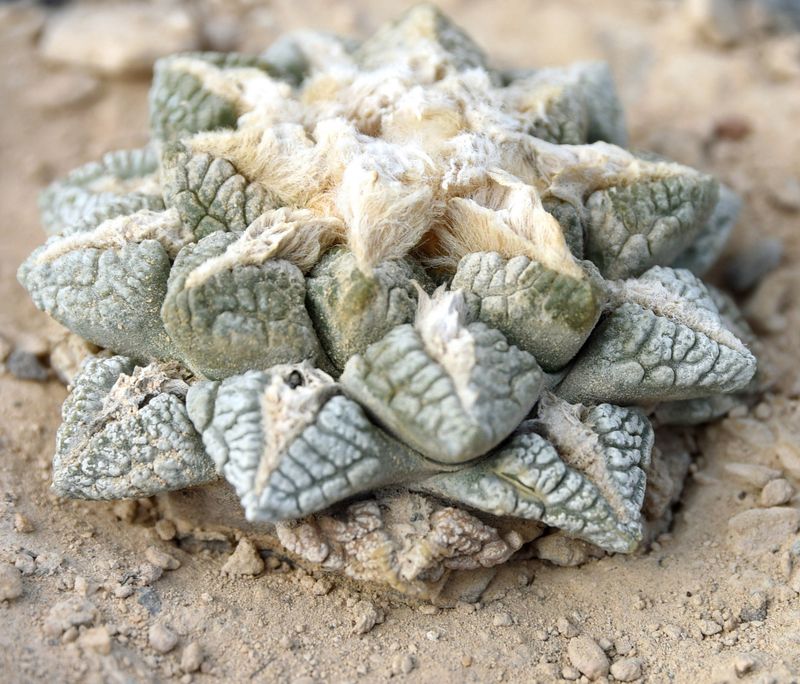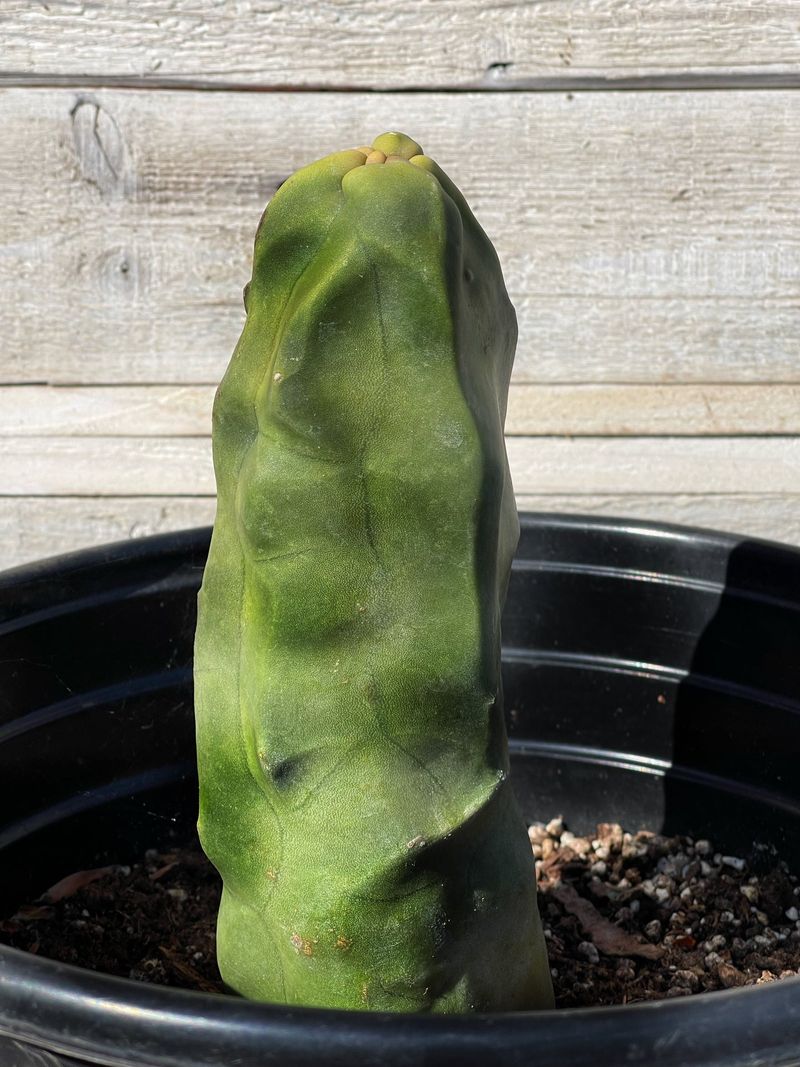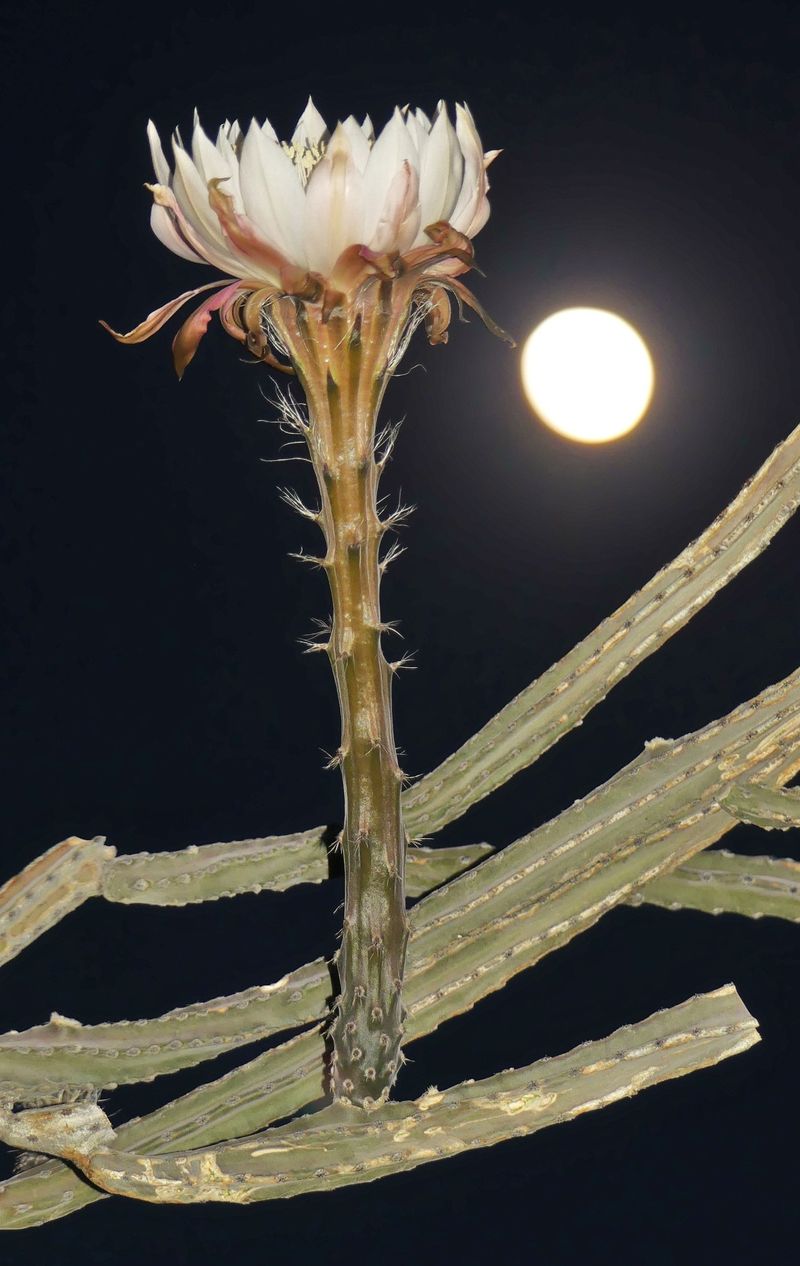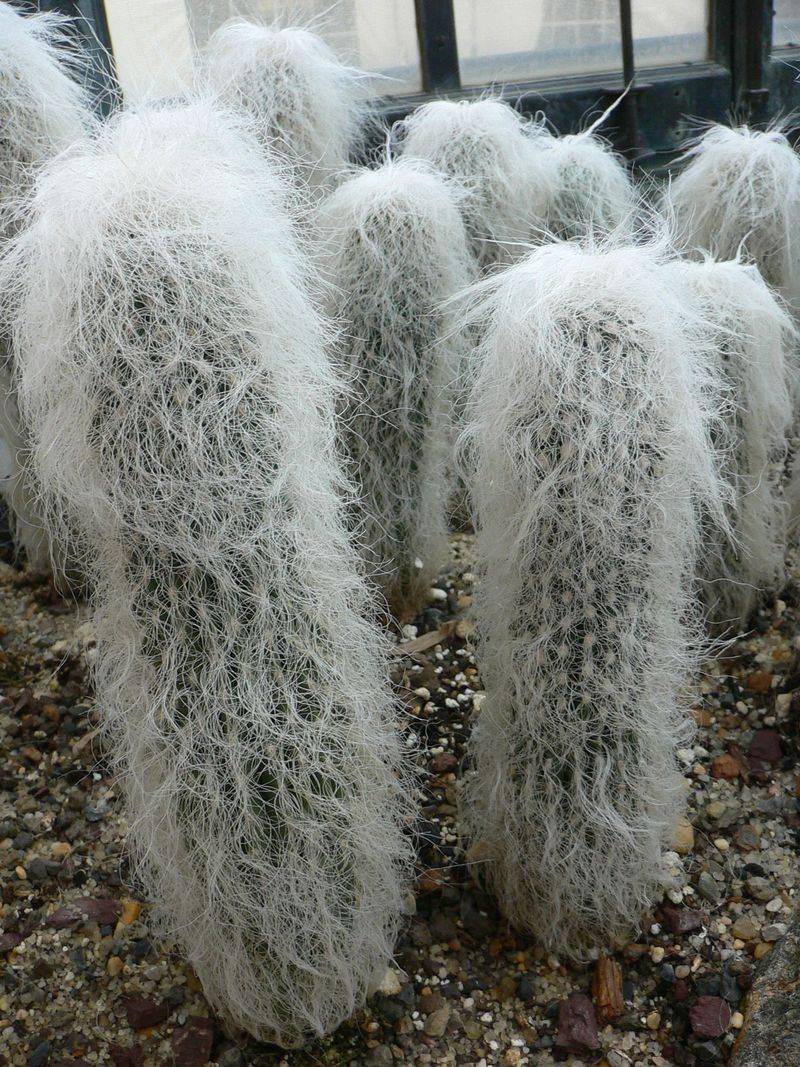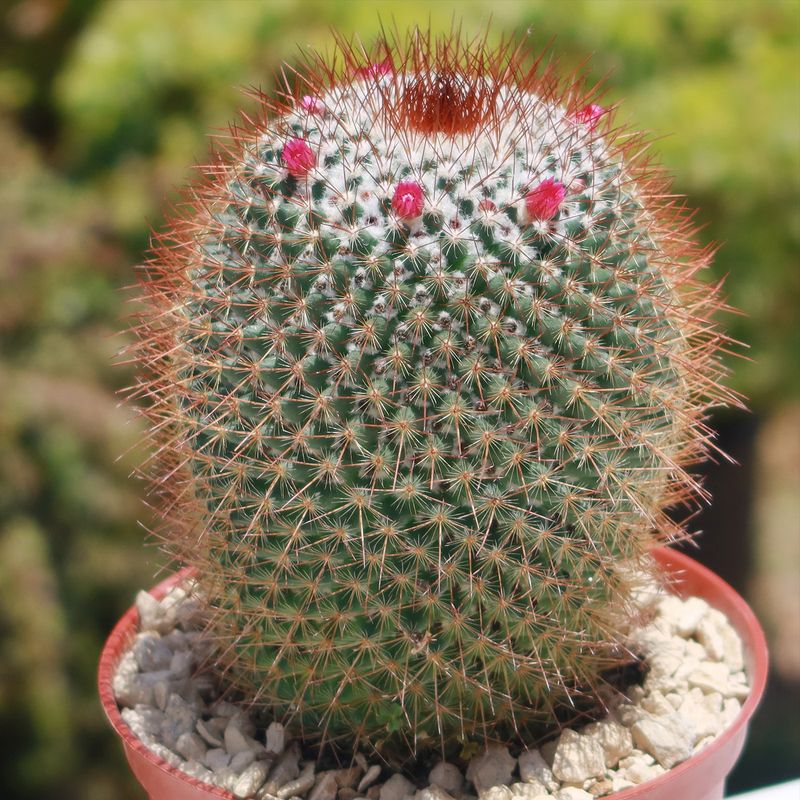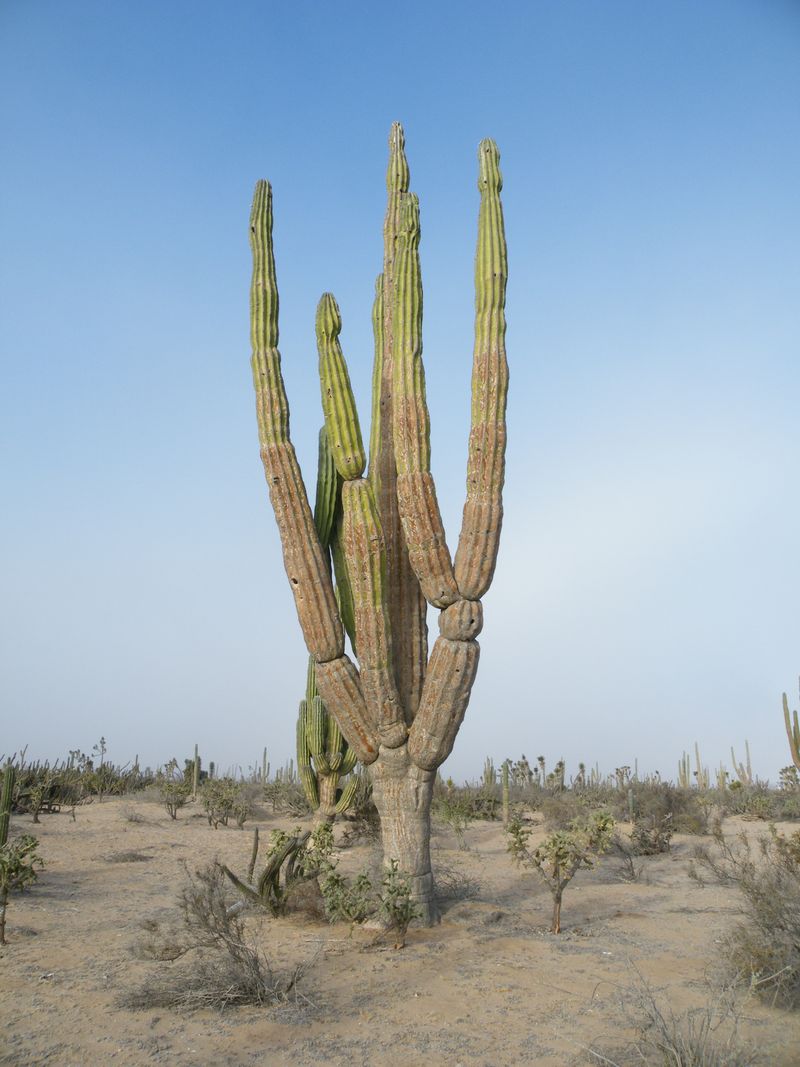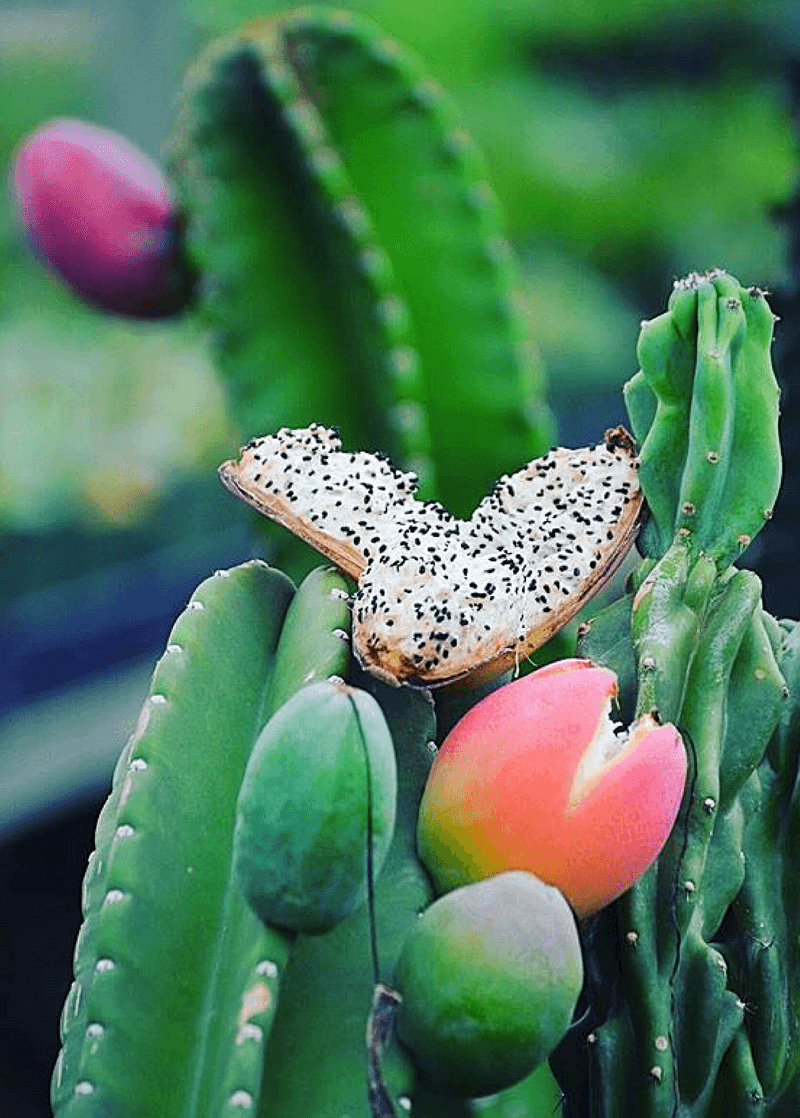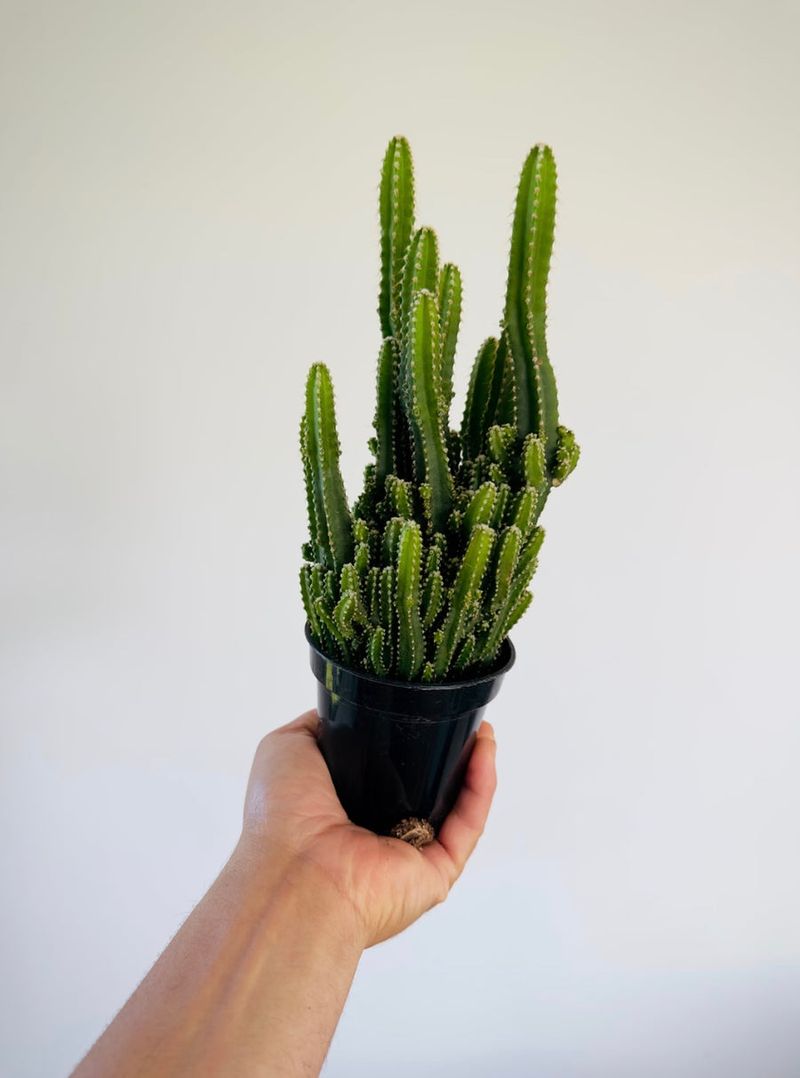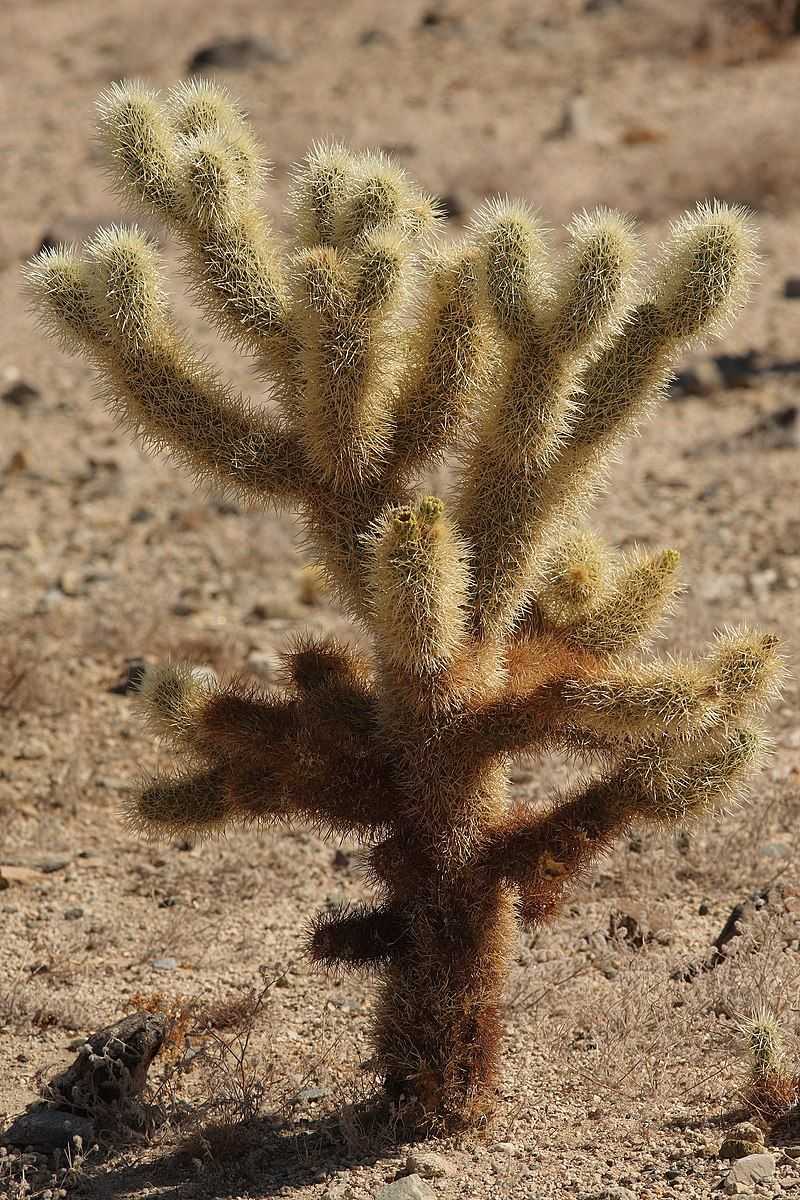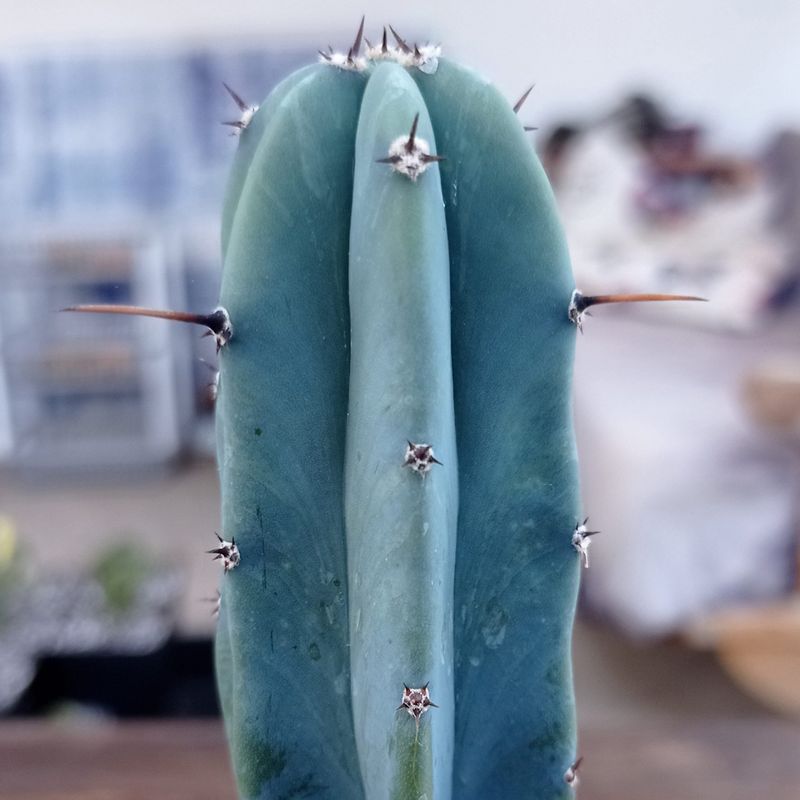Discover the fascinating world of cacti as we explore 20 unique species that not only survive but thrive in the harshest desert environments on Earth.
These resilient plants have adapted to extreme conditions, showcasing their incredible ability to endure heat, drought, and rugged terrains.
Each cactus has its own distinct characteristics, making them not only survivors but also captivating subjects for plant enthusiasts and nature lovers alike. Join us as we uncover the secrets behind these desert dwellers and their stunning adaptations.
1. Saguaro Cactus (Carnegiea gigantea)
The iconic Saguaro Cactus is a symbol of the American Southwest, known for its towering presence and unique shape. These cacti can grow up to 40 feet tall and live for over 150 years.
Their thick, waxy skin helps conserve water, while their pleated exterior allows them to expand and hold more moisture. The Saguaro blooms beautiful white flowers, which attract pollinators like bats and bees.
These flowers open at night and close in the early afternoon. Native to the Sonoran Desert, the Saguaro provides shelter and food for many desert creatures, making it a vital part of the ecosystem.
2. Barrel Cactus (Ferocactus species)
Barrel Cacti are known for their distinctive barrel shape and ribbed bodies. These hardy plants are well-suited to arid environments, storing water in their thick, fleshy stems to survive prolonged droughts. Their spines provide shade and reduce water loss.
Barrel Cacti produce vibrant flowers, usually in shades of yellow or orange, which bloom atop the cactus. These flowers are a feast for pollinators, ensuring the continuation of the species. Found in the deserts of the southwestern United States and Mexico, Barrel Cacti are a staple of the desert flora.
3. Prickly Pear Cactus (Opuntia species)
Prickly Pear Cacti are easily identifiable by their flat, paddle-like pads and vibrant fruits. These cacti are incredibly versatile, thriving in a range of desert environments. The pads are covered with spines and small, hair-like glochids, which can be irritating to the touch.
The fruits, known as tunas, are edible and often used in beverages and culinary dishes. Prickly Pear Cacti also bloom with colorful flowers, attracting pollinators. These resilient plants are found across the Americas, from arid deserts to coastal areas, showcasing their adaptability.
4. Organ Pipe Cactus (Stenocereus thurberi)
The Organ Pipe Cactus is named for its multi-stemmed growth, resembling the pipes of an organ. These cacti are native to the Sonoran Desert and can reach heights of up to 25 feet. Their ribbed stems are covered with spines, providing protection from herbivores.
Organ Pipe Cacti bloom nocturnal white flowers, which are pollinated by bats. The fruit is edible and provides nourishment for desert wildlife. This cactus thrives in rocky desert soil, where it absorbs water efficiently, ensuring its survival in one of the harshest climates on Earth.
5. Cholla Cactus (Cylindropuntia species)
Cholla Cacti are characterized by their cylindrical stems and formidable spines. These spines are often barbed, making them difficult to remove once they attach to skin or clothing. Chollas are well-adapted to desert life, storing water in their thick stems.
These cacti bloom with bright flowers, adding a splash of color to the arid surroundings. Chollas are found throughout the deserts of the southwestern United States and Mexico.
Despite their prickly nature, they provide important habitat and food for various desert animals, contributing to the ecosystem’s balance.
6. Golden Barrel Cactus (Echinocactus grusonii)
The Golden Barrel Cactus is renowned for its striking appearance, featuring a spherical shape and vibrant yellow spines. This cactus is native to the deserts of central Mexico, where it thrives in rocky, well-drained soils.
Golden Barrels can grow up to three feet in diameter and live for decades. They require minimal water, making them well-suited for desert life. During the blooming season, they produce small yellow flowers at the top of the cactus.
These cacti are often used in ornamental gardens and as focal points in desert landscapes, admired for their unique beauty.
7. Fishhook Cactus (Mammillaria species)
Fishhook Cacti are small, globular cacti known for their unique hooked spines. These spines help protect the cactus from herbivores and anchor it to the ground. Fishhook Cacti thrive in arid environments, often found in rocky soils and desert landscapes.
In spring, they bloom with delicate pink or white flowers, which are pollinated by insects. Despite their small size, Fishhook Cacti are remarkably resilient, capable of surviving extreme heat and drought.
These cacti are native to the deserts of the southwestern United States and Mexico, adding charm to the rugged terrain.
8. Hedgehog Cactus (Echinocereus species)
Hedgehog Cacti are known for their cylindrical stems and vivid flowers. These cacti grow in clusters, forming low mounds in the desert landscape. Their stems are covered with spines, providing protection and minimizing water loss.
The flowers of the Hedgehog Cactus are a brilliant magenta, attracting pollinators such as bees and hummingbirds. These cacti are native to the rocky deserts of the southwestern United States and Mexico.
Hedgehog Cacti are a resilient species, capable of enduring harsh desert conditions while adding a splash of color to their surroundings.
9. Beavertail Cactus (Opuntia basilaris)
Beavertail Cacti are known for their flat, oval pads and stunning pink flowers. These cacti are native to the arid regions of the southwestern United States and thrive in sandy soils.
The pads are covered with small spines, providing a defense against herbivores. In spring, Beavertail Cacti burst into bloom, transforming the desert landscape with their vibrant flowers.
These cacti are drought-tolerant, able to withstand the extreme conditions of their environment. Beavertail Cacti not only survive in harsh deserts but also enhance the natural beauty of these rugged terrains.
10. Senita Cactus (Pachycereus schottii)
Senita Cacti are distinguished by their tall, slender stems and woolly spines at the top. These cacti can grow up to 15 feet tall and are native to the deserts of Baja California and Sonora, Mexico.
The Senita blooms small, pinkish flowers that open at night, attracting nocturnal pollinators such as moths and bats. The fruit is edible, providing sustenance for desert wildlife.
Senita Cacti are well-adapted to arid environments, efficiently storing water in their stems. These striking plants add a unique touch to the desert landscape, thriving in the harshest conditions.
11. Living Rock Cactus (Ariocarpus species)
Living Rock Cacti are unique, low-growing cacti that often resemble the rocks they grow among. Their star-shaped rosettes and rugged texture provide excellent camouflage in their desert habitats.
These cacti are native to the arid regions of Mexico, where they have adapted to survive extreme heat and limited water availability. Living Rock Cacti bloom with small, vibrant flowers, usually in shades of pink or yellow.
Despite their unassuming appearance, they are highly prized by collectors and cactus enthusiasts for their unusual form and resilience in harsh desert conditions.
12. Totem Pole Cactus (Pachycereus schottii var. monstrosus)
The Totem Pole Cactus is known for its smooth, columnar shape and minimal spines. These cacti can grow up to 15 feet tall and are native to the deserts of Baja California and Sonora, Mexico.
Their distinctive appearance makes them popular in cactus gardens and landscapes. Totem Pole Cacti are well-adapted to arid conditions, storing water in their thick stems to survive droughts.
These cacti bloom infrequently, producing small white flowers. The Totem Pole’s striking form adds an architectural element to the desert scenery, standing tall against the rugged terrain.
13. Queen of the Night (Peniocereus greggii)
The Queen of the Night Cactus is famed for its elusive, night-blooming flowers. These slender cacti are native to the deserts of the southwestern United States and Mexico, where they blend into the desert scrub.
Once a year, they produce large, fragrant white flowers that open at night and close by morning. This nocturnal bloom attracts pollinators like moths and bats.
The Queen of the Night Cactus is a master of disguise, with its thin, spindly stems often mistaken for dead twigs, allowing it to thrive unnoticed in its harsh desert environment.
14. Old Man Cactus (Cephalocereus senilis)
The Old Man Cactus is easily recognized by its long, white, hair-like spines, which give it a distinctive, shaggy appearance. These cacti are native to the arid regions of central Mexico, where they grow on rocky slopes.
The white spines serve as protection from the intense sun, reflecting light and reducing water loss. Despite its unusual appearance, the Old Man Cactus is a resilient plant, capable of withstanding the harsh desert environment.
It blooms occasionally, producing small pink flowers that add a splash of color to its woolly surface.
15. Pincushion Cactus (Mammillaria species)
Pincushion Cacti are small, globular plants known for their dense spines and charming flowers. These cacti are native to the deserts of the southwestern United States and Mexico, where they thrive in rocky soils.
Pincushion Cacti bloom in spring, producing rings of bright pink or yellow flowers. Their compact size and attractive appearance make them popular among cactus enthusiasts.
Despite their delicate look, Pincushion Cacti are hardy plants, well-adapted to survive extreme heat and drought. They add a touch of beauty to the rugged desert landscape.
16. Cardon Cactus (Pachycereus pringlei)
The Cardon Cactus is the world’s largest cactus, reaching heights of over 60 feet. Native to the deserts of Baja California and Sonora, Mexico, these cacti are impressive both in size and stature.
Their thick, ribbed stems are covered with spines and serve as water reservoirs, enabling them to survive long periods of drought. Cardon Cacti bloom with large white flowers, which attract nocturnal pollinators.
These majestic giants are a crucial part of the desert ecosystem, providing habitat and food for various wildlife species.
17. Peruvian Apple Cactus (Cereus repandus)
The Peruvian Apple Cactus is known for its tall, columnar growth and edible fruit. These cacti are native to South America but have adapted to subtropical desert environments elsewhere.
Their blue-green stems are ribbed and covered with small spines. The Peruvian Apple Cactus blooms with large white flowers that open at night, followed by the development of sweet, edible fruit.
These cacti are popular in cultivation for their fruit and ornamental value. They are hardy plants, capable of thriving in dry conditions while adding an exotic touch to the landscape.
18. Fairy Castle Cactus (Acanthocereus tetragonus ‘Fairy Castle’)
The Fairy Castle Cactus is cherished for its whimsical, spire-like growth, resembling a miniature castle. This cactus is a cultivated variety, popular as a houseplant and in gardens for its enchanting appearance.
The stems are ribbed and covered with small spines, growing in clusters that mimic turrets and towers. Fairy Castle Cacti are hardy plants, requiring minimal water and thriving in bright, indirect sunlight.
They rarely bloom, but when they do, they produce small white flowers. These cacti add a touch of magic to any setting, captivating plant lovers with their fantasy-like form.
19. Teddy Bear Cholla (Cylindropuntia bigelovii)
The Teddy Bear Cholla is famous for its dense spines that appear soft and fuzzy from a distance but are anything but. These cacti are native to the deserts of the southwestern United States, where they form dense stands.
The spines are barbed and detach easily, making them notorious for attaching to anything that brushes by. Despite their prickly nature, Teddy Bear Chollas bloom with beautiful yellow flowers.
They play a vital role in the desert ecosystem, providing structure and habitat. Their unique appearance is both captivating and cautionary for desert travelers.
20. Blue Flame Cactus (Myrtillocactus geometrizans)
The Blue Flame Cactus is celebrated for its striking blue-green stems that stand out in the desert landscape. These cacti are native to Mexico and are often used as ornamental plants due to their unique color.
Blue Flame Cacti grow in tall, branching columns, covered with small spines. They thrive in well-drained soils and require minimal water, making them perfect for arid environments.
In spring, they produce small white flowers, followed by edible berries. The bold color and architectural form of the Blue Flame Cactus make it a favorite among cactus enthusiasts and gardeners.
